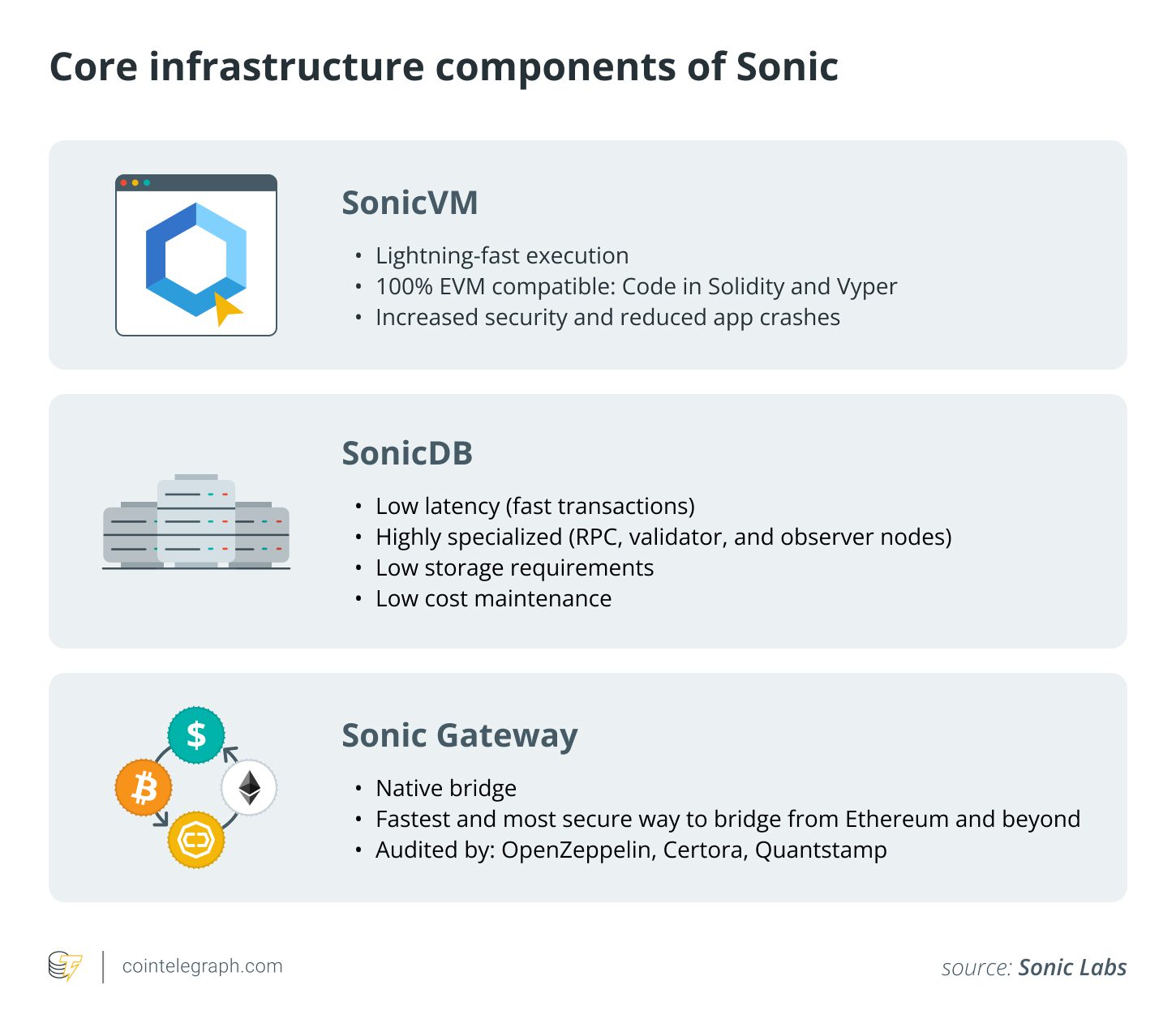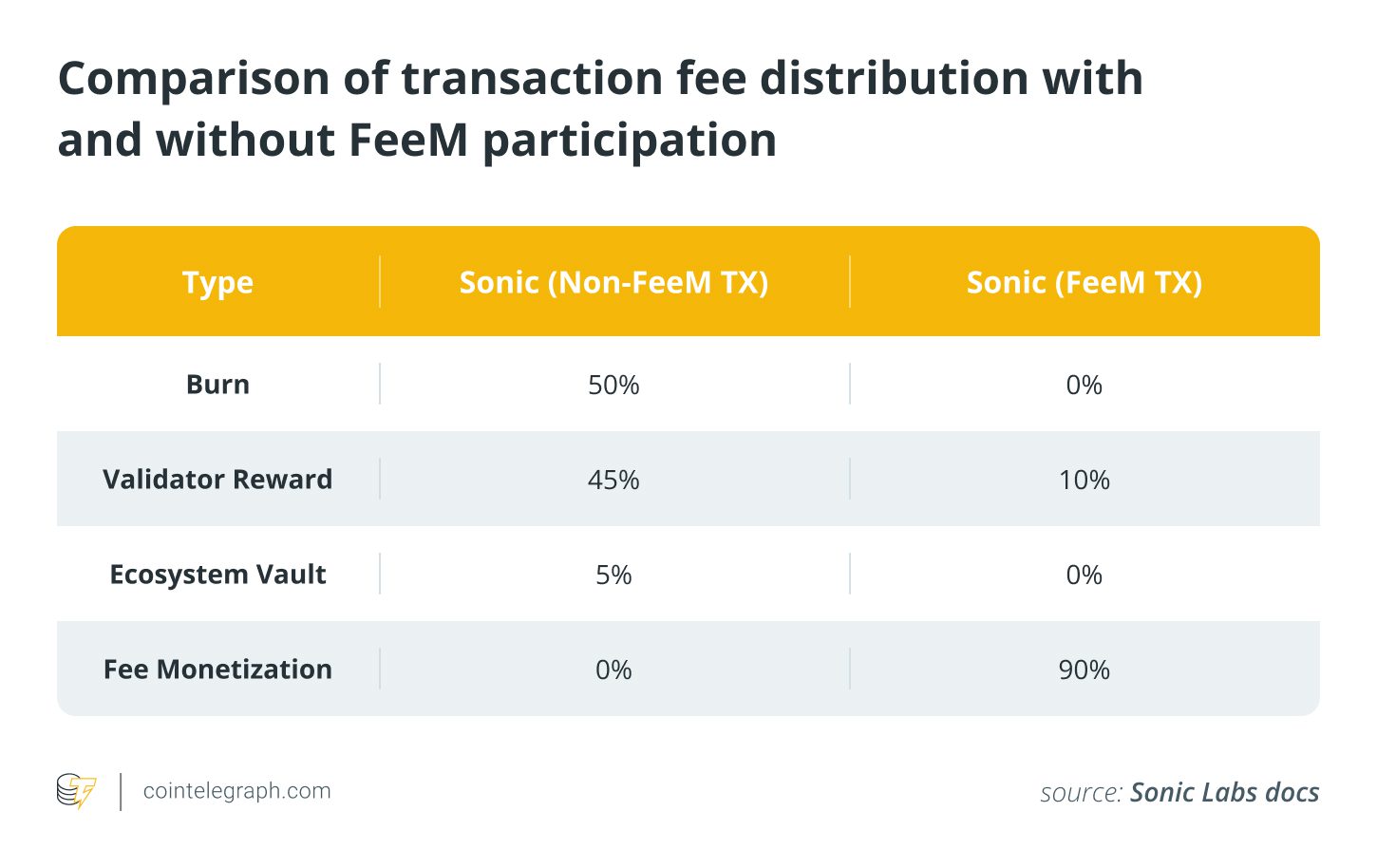Understanding Sonic: Fantom’s Next-Generation Blockchain
Fantom, a pioneer in Directed Acyclic Graph (DAG) technology for distributed ledgers, has introduced Sonic, a fully independent blockchain network designed to overcome the limitations of its predecessor. This move aims to enhance transaction speeds, reduce fees, and implement advanced features tailored for the evolving DeFi landscape.

Key Objectives Behind Sonic’s Development:
- Address Bottlenecks: Overcome storage bloat and slow execution times associated with Ethereum-derived account storage models and the EVM.
- Implement Updates: Introduce numerous updates and improvements to the Fantom ecosystem.
- Independent Network: Establish a fully independent blockchain network for greater control and innovation.
Sonic’s Technical Architecture: A Deep Dive
Sonic’s architecture is built upon the proprietary SonicVM execution engine and SonicDB database, designed to optimize performance and reduce storage requirements.
SonicVM Execution Engine:
- Dynamic Translation: Translates EVM bytecode into a faster internal format for accelerated execution.
- Optimization: Optimizes heavy computations to prevent repeated work and pre-analyzes contract code to cache valid jump destinations.
- EVM Compatibility: Fully compatible with the EVM, allowing Fantom smart contracts to run seamlessly on the new blockchain.
SonicDB Database:
- Separation of State: Divides the blockchain state into two databases: LiveDB for fast access to the current state and execution, and ArchiveDB for storing full historical data.
- Reduced Storage: Enables consensus nodes to cut data storage requirements by up to 90%, significantly reducing hardware requirements and synchronization time.

The S Token: Powering the Sonic Ecosystem
The Sonic mainnet is powered by the S token, the native token of the network. FTM holders can convert their tokens to S at a 1:1 ratio. The tokenomics model is designed to incentivize early adopters and developers.
Key Features of the S Token:
- Non-Inflationary: Remains non-inflationary for the first six months following the mainnet launch.
- Early User Rewards: 6% of the initial supply will be minted to reward early users of the blockchain.
- Developer Incentives: Sonic rewards developers via its Gas Fee Monetization (FeeM) mechanism, where up to 90% of transaction fees across participating applications are forwarded to developers.

Sonic as a New Hub for DeFi Innovation
Andre Cronje, a founder of Fantom and the mastermind behind Yearn.finance, is leading DeFi innovation on Sonic. His project, Flying Tulip, is a new DeFi platform that combines trading, liquidity pools, and lending functionalities.
Flying Tulip:
- Dynamic Bonding Curve: Based on the same concept as Curve v2’s dynamic bonding curve, which adjusts its curvature based on how close the pool price is to an external price observed by an oracle.
- Liquidity Concentration: Automatically concentrates liquidity around the current price, simplifying liquidity management and enhancing capital efficiency.
- Improvements: Introduces faster equilibrium curve updates and narrower ranges alongside other improvements with a novel dynamic loan-to-value model.
Conclusion
Sonic represents a significant evolution in blockchain technology, offering enhanced speed, reduced costs, and innovative features designed to drive the future of DeFi. By addressing the limitations of its predecessor and introducing a new tokenomics model, Sonic aims to become a leading platform for decentralized applications and financial services.